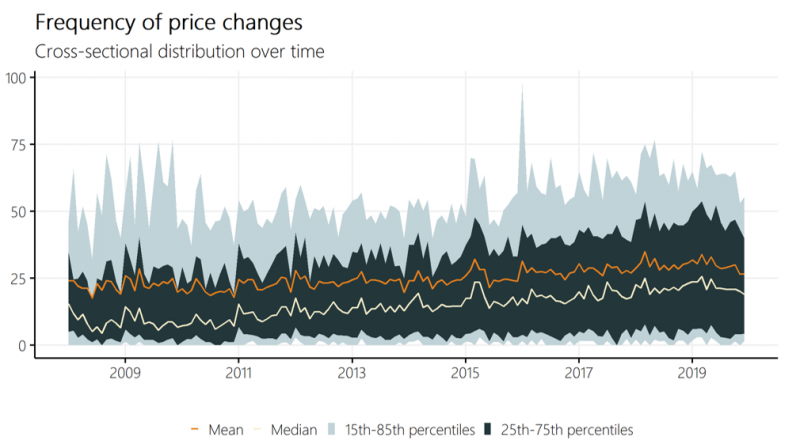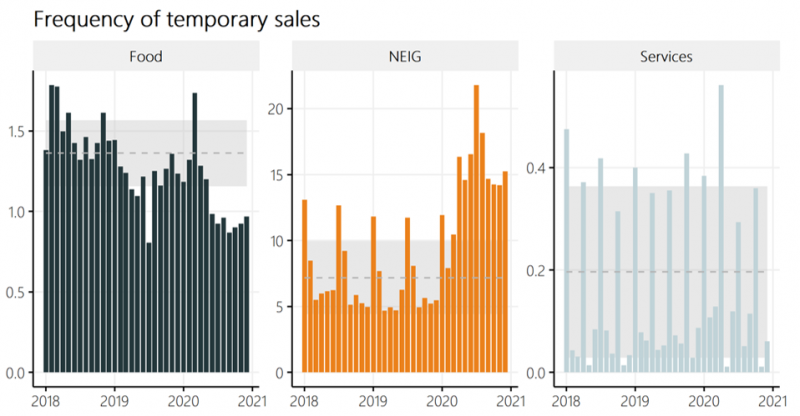References
Alvarez, S. E. and Lein, S. M. (2020). Tracking inflation on a daily basis. Swiss Journal of Economics and Statistics, 156(1):1–13.
Anderson, E., Malin, B. A., Nakamura, E., Simester, D., and Steinsson, J. (2017). Informational rigidities and the stickiness of temporary sales. Journal of Monetary Economics, 90:64–83.
Balleer, A., Link, S., Menkhoff, M., and Zorn, P. (2020). Demand or Supply? Price Adjustment During the Covid-19 Pandemic. Technical Report, CEPR DP14907.
Blinder, A., Canetti, E. R., Lebow, D. E., and Rudd, J. B. (1998). Asking about prices: A new approach to understanding price stickiness. Russell Sage Foundation.
Cavallo, A. (2018). More Amazon Effects: Online competition and pricing behaviors. Jackson Hole Economic Symposium Conference Proceedings (Federal Reserve Bank of Kansas City).
Gautier, E., Conflitti, C., Menz, J.-O., Messner, T., Rumler, F., Santoro, S., Wieland, E., and Zimmer, H. (2022). New Facts on Consumer Price Rigidity in the Euro Area. ECB Working Paper Nr. 2669.
Klenow, P. J. and Malin, B. A. (2010). Microeconomic evidence on price-setting. In Handbook of Monetary Economics, vol. 3, ed. by B. M. Friedman and M.Woodford, pp. 231–284. Elsevier.
Kryvtsov, O. and Vincent, N. (2021). The cyclicality of sales and aggregate price flexibility. The Review of Economic Studies, 88(1):334–377.
Nakamura, E. and Steinsson, J. (2008). Five facts about prices: A reevaluation of menu cost models. The Quarterly Journal of Economics, 123(4):1415–1464.
Nakamura, E. and Steinsson, J. (2013). Price rigidity: Microeconomic evidence and macroeconomic implications. Annual Review of Economics, 5(1):133–163.
Rudolf, B. and Seiler, P. (2022). Price Setting Before and During the Pandemic: Evidence from Swiss Consumer Prices. ECB Working Paper Nr. 2748.
Seiler, P. (2022): Wie bestimmen Unternehmen ihre Preise? Ergebnisse einer Ad-hoc-Umfrage in der Schweiz. KOF Analysen, Vol. 2022(4).






